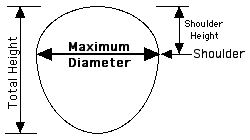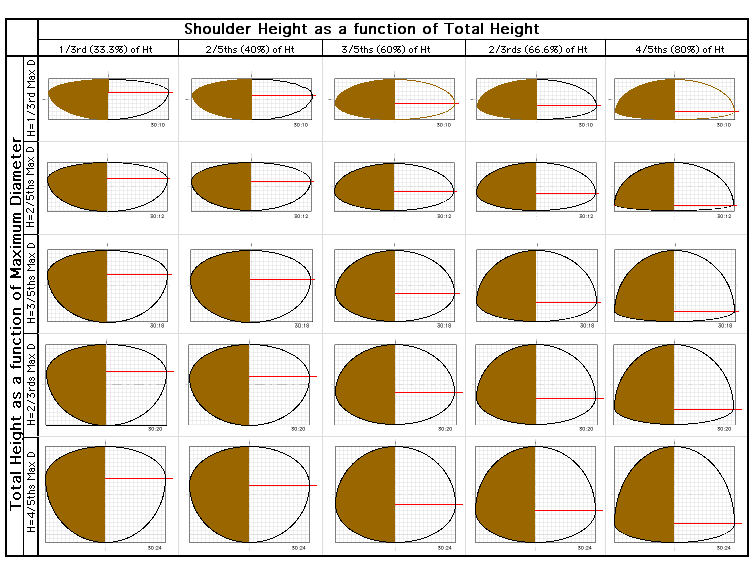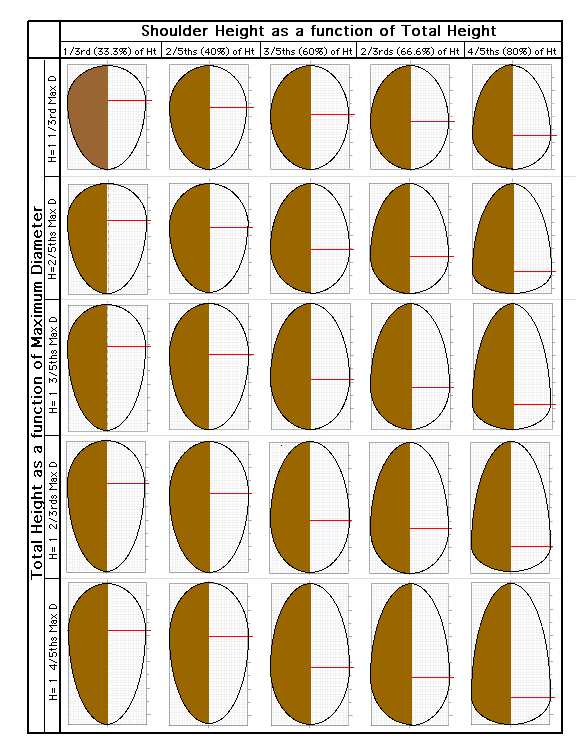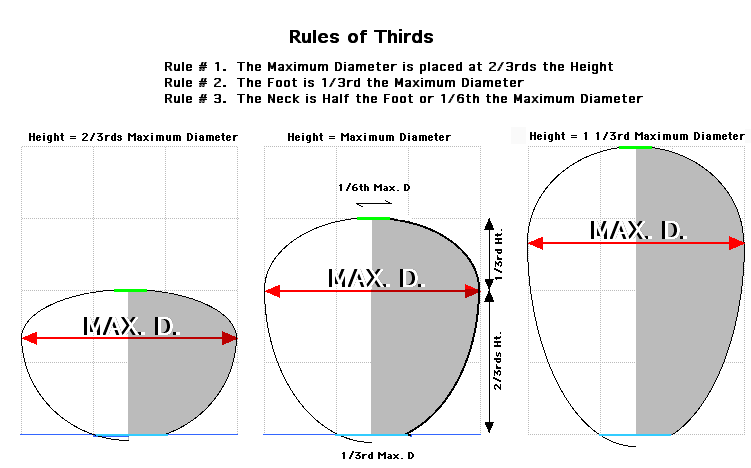Generally, no matter what you're going to do, it's good to have a plan, at leat as a starting point. And when it comes to turned Hollow Forms, it's good to have a plan - or at least a vague idea of where you're going once the chunk of wood you're about to turn is mounted on the lathe. And to make things simpler, it would be a good idea to rough the chunk of wood to round, at least at its largest diameter - because what follows is all based on starting with the MAXIMUM DIAMETER and selecting a TOTAL HEIGHT and SHOULDER HEIGHT for the piece to be turned.

There are all sorts of "rules" and "rules of thumb" for the "proper proportions" for hollow forms, two of the most often mentioned "rules" is The Rule of Thirds and The Rule of Fifths. There are many text versioins of these two "rules". For many, a word description is all they need to uderstand and use one of these "rules". I'm not one of those people. I NEED a picture or an illustration before I understand and can use a "rule".
SO - as a first cut at The Rule of Thirds and The Rule of Fifths, I made myself the following illustrated table that I can download, print at my leisure - and leave a copy somewhere near my lathe to refer to when needed. The "table" below is actually a GIF file YOU can download and print at YOUR leisure and leave a copy by YOUR lathe somewhere.
Given the MAXIMUM DIAMETER of your blank you can pick the shape you like - look to the left to find the TOTAL HEIGHT, given your Max Diam., and then look up to find where the SHOULDER is, relative to the Total Height. With the height and shoulder location scribed or penciled on your blank all you have to do then is remove everything that doesn't look like the shape you selected. OK - so you also have to hollow out the form - and figure out if the piece is going to have a "neck" and a "foot" - and figure out how big they should be - but hey, the table will at least give you the beginnings of a PLAN.

OK - so if the Total Height is LESS THAN to Maximum Diameter the table above covers the bases. But what if the Total Height is GREATER THAN the Maximum Diameter? What would those forms look like?

If you'd like an Excel Spreadsheet to do the math for you, for heights from 1/3rd to 1 4/5ths of the Maximum Diameter and heights from 1 1/3rd to 1 4/5ths of Maximum Diameter - CLICK HERE
Here's another version of The Rule of Thirds which includes FOOT DIAMETER and NECK DIAMETER.
Note that the upper and lower curves still meet tangent to each other on the sides and the bottom curves
don't intersect at the bottom of the hollow form, but rather must pass through the outside diameter of the
foot and thus below the actual bottom of the hollow form.
The following is based on Russ Fairfield's article "Some Rules For Good Design" in the Articles Section of Wood Central. To see the whole article full of really good information - CLICK HERE

(I intend to do similar illustrations of other "rules" and "rules of thumb" I've come acrossed - so this is just a starting point.)